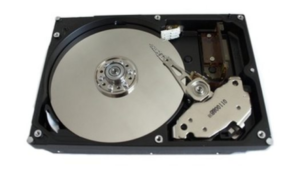Persistent beachball Very often, the pointer turns into a rotating beach ball while your…
How To Find Windows Missing or Corrupted Files
- Track Your Apps
When you open your regular Start Menu, you see a list of your apps running down the side. The most-used apps are on top, but the rest are laid out in alphabetical order. You could scroll through them all to find the one you want to open, but a quicker way to manage it is by clicking on any of the main letters (like “A”). This opens up a view of the entire alphabet. Just click on the first letter of the app you want, and you will be taken directly to that part of the Start Menu.
- Task Scheduler
Task Scheduler does what you think it does; it helps you schedule tasks on your computer, like turning it off at a specific time each day. Type “task scheduler” into your taskbar to get started.
- Find Missing or Corrupted Files
Remember this: cmd. It’s a command prompt that can help you find files that your Windows operating system needs to work properly. It can also help you fix problems.
Type “cmd” into the taskbar >> Right-click on Command Prompt >> Select Run As Administrator. To find missing or corrupted files, type “sfc /scannow.” To check for disk problems, type “chkdsk /f.”
- Share Files
Your family and you probably send each other files all the time. You might send a document or a video by email. A better way is to set up everyone in your house on a Windows network to share files.
You start by clicking on the Start button (the Windows icon on the lower-left side of your computer screen). Then, go to Settings (the little gear icon) >> Network & Internet >> HomeGroup >> Create a HomeGroup.
- Print PDF
If you print documents, you’re invariably hearing “send it to me as a PDF.” PDF is a file format that’s compatible across multiple operating systems and software programs. Windows 10 can easily convert a Word document into a PDF.
To do this, go through the steps to print as you normally would. When you see the option to choose a specific printer, select the one that says, “Microsoft Print to PDF.”
- Record Screen Activity
We’re used to videos and online games occurring in real time, but now you can record them for later viewing. When you’re in the game or video, click on the Windows key on your keyboard and the letter G at the same time. Follow the prompts to record.
- Speed Up Your Startup
When your computer gets slow, access Task Manager and trim down the number of programs that load on startup. Click on the “Startup” tab, and you will see a list of all your programs, whether they’re enabled, and what sort of impact each one has on your startup time.
Select a program and hit the “Disable” button to remove it from your start-up process. Scrutinize anything with a medium or high impact, but focus on programs you don’t use often.
If you find an app eating more than its fair share, then you can shut it down by selecting it and clicking “End task.” Be aware that you may lose work when you do this, so save first if you can.
